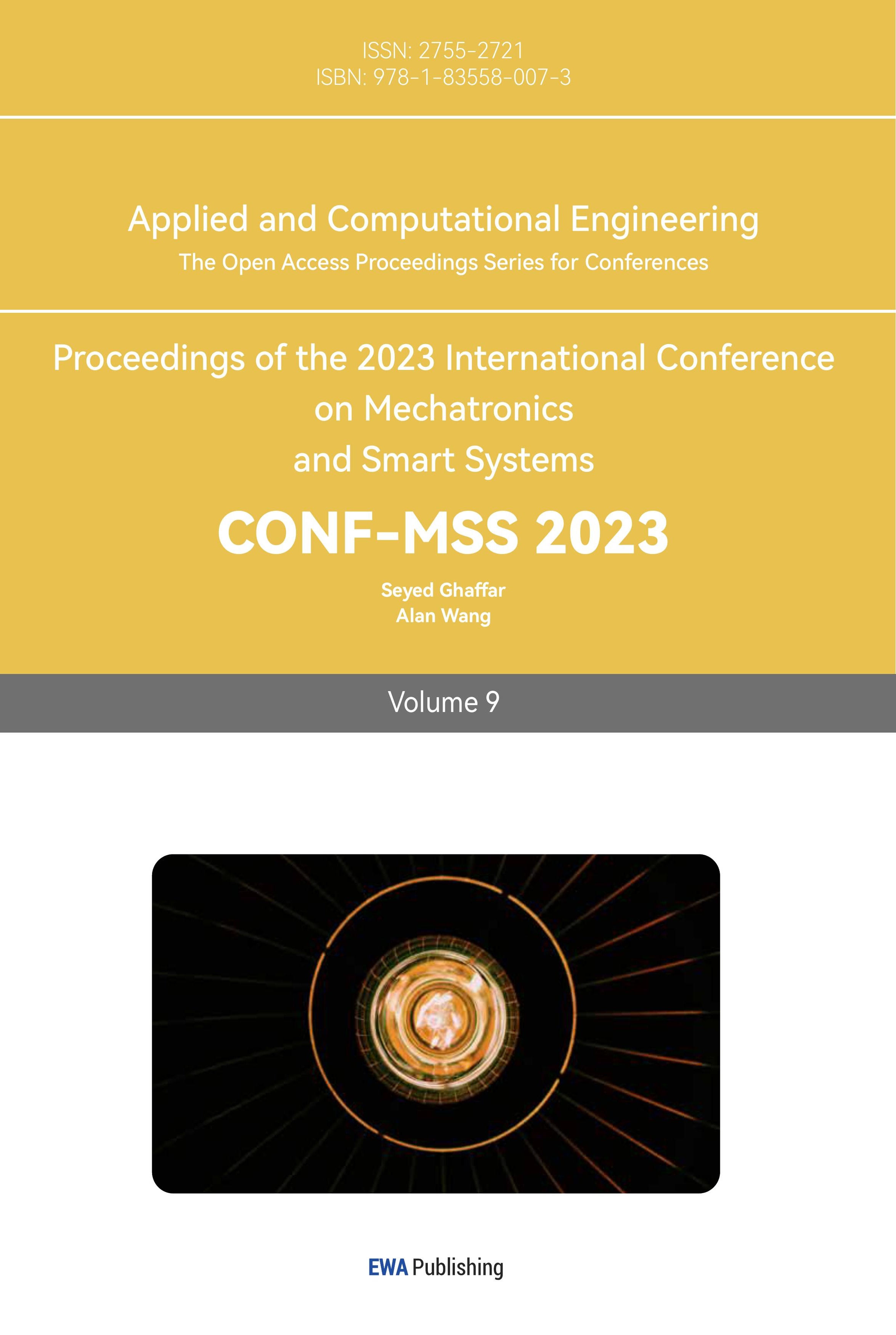References
[1]. Daniela Colombini,Enrico Occhipinti. Preventing upper limb work-related musculoskeletal disorders (UL-WMSDS): New approaches in job (re)design and current trends in standardization[J]. Applied Ergonomics,2006,37(4).
[2]. E. Prassler and A. Baroncelli, "Team ReWalk Ranked First in the Cybathlon 2016 Exoskeleton Final [Industrial Activities]," in IEEE Robotics & Automation Magazine, vol. 24, no. 4, pp. 8-10, Dec. 2017, doi: 10.1109/MRA.2017.2757638.Abstract: Presents the major events and activities that took pace at Cybathlon 2016.URL: https://ieeexplore.ieee.org/stamp/ stamp.jsp?tp=&arnumber=8197469&isnumber=8197422.
[3]. Low YP. The Bone and Joint Decade 2000-2010. Ann Acad Med Singap. 2002 Sep;31(5):621-2.
[4]. V. Kumar, Y. V. Hote and S. Jain, "Review of Exoskeleton: History, Design and Control," 2019 3rd International Conference on Recent Developments in Control, Automation & Power Engineering (RDCAPE), Noida, India, 2019, pp. 677-682, doi: 10.1109/RDCAPE47 089.2019.8979099.
[5]. A. Voilqué, J. Masood, J. Fauroux, L. Sabourin and O. Guezet, "Industrial Exoskeleton Technology: Classification, Structural Analysis, and Structural Complexity Indicator," 2019 Wearable Robotics Association Conference (WearRAcon), Scottsdale, AZ, USA, 2019, pp. 13-20.
[6]. Monica, L., Draicchio, F., Ortiz, J., Chini, G., Toxiri, S., Anastasi, S. (2021). Occupational Exoskeletons: A New Challenge for Human Factors, Ergonomics and Safety Disciplines in the Workplace of the Future. In: Black, N.L., Neumann, W.P., Noy, I. (eds) Proceedings of the 21st Congress of the International Ergonomics Association (IEA 2021). IEA 2021. Lecture Notes in Networks and Systems, vol 222. Springer, Cham. https://doi.org/10.1007/978-3-030-74611-7_17.
[7]. Moulart Mélissa,Olivier Nicolas,Giovanelli Yonnel,Marin Frédéric. Subjective assessment of a lumbar exoskeleton's impact on lower back pain in a real work situation[J]. Heliyon, 2022, 8 (11).
[8]. Ko Hun Keon, Lee Seok Won,Koo Dong Han, Lee Inju,Hyun Dong Jin. Waist-assistive exoskeleton powered by a singular actuation mechanism for prevention of back-injury [J]. Robotics and Autonomous Systems,2018,107.
[9]. Zhang Jingshuai, Zhong Peisi, Liu Mei, et al. Kinematics modeling and simulation analysis of transporting power-assisted exoskeleton robots [J]. Science Technology and Engineering, 202, 20( 8) : 3096-3102.
Cite this article
Lu,Y. (2023). Review on the development of occupation-related assistive exoskeletons. Applied and Computational Engineering,9,82-85.
Data availability
The datasets used and/or analyzed during the current study will be available from the authors upon reasonable request.
Disclaimer/Publisher's Note
The statements, opinions and data contained in all publications are solely those of the individual author(s) and contributor(s) and not of EWA Publishing and/or the editor(s). EWA Publishing and/or the editor(s) disclaim responsibility for any injury to people or property resulting from any ideas, methods, instructions or products referred to in the content.
About volume
Volume title: Proceedings of the 2023 International Conference on Mechatronics and Smart Systems
© 2024 by the author(s). Licensee EWA Publishing, Oxford, UK. This article is an open access article distributed under the terms and
conditions of the Creative Commons Attribution (CC BY) license. Authors who
publish this series agree to the following terms:
1. Authors retain copyright and grant the series right of first publication with the work simultaneously licensed under a Creative Commons
Attribution License that allows others to share the work with an acknowledgment of the work's authorship and initial publication in this
series.
2. Authors are able to enter into separate, additional contractual arrangements for the non-exclusive distribution of the series's published
version of the work (e.g., post it to an institutional repository or publish it in a book), with an acknowledgment of its initial
publication in this series.
3. Authors are permitted and encouraged to post their work online (e.g., in institutional repositories or on their website) prior to and
during the submission process, as it can lead to productive exchanges, as well as earlier and greater citation of published work (See
Open access policy for details).
References
[1]. Daniela Colombini,Enrico Occhipinti. Preventing upper limb work-related musculoskeletal disorders (UL-WMSDS): New approaches in job (re)design and current trends in standardization[J]. Applied Ergonomics,2006,37(4).
[2]. E. Prassler and A. Baroncelli, "Team ReWalk Ranked First in the Cybathlon 2016 Exoskeleton Final [Industrial Activities]," in IEEE Robotics & Automation Magazine, vol. 24, no. 4, pp. 8-10, Dec. 2017, doi: 10.1109/MRA.2017.2757638.Abstract: Presents the major events and activities that took pace at Cybathlon 2016.URL: https://ieeexplore.ieee.org/stamp/ stamp.jsp?tp=&arnumber=8197469&isnumber=8197422.
[3]. Low YP. The Bone and Joint Decade 2000-2010. Ann Acad Med Singap. 2002 Sep;31(5):621-2.
[4]. V. Kumar, Y. V. Hote and S. Jain, "Review of Exoskeleton: History, Design and Control," 2019 3rd International Conference on Recent Developments in Control, Automation & Power Engineering (RDCAPE), Noida, India, 2019, pp. 677-682, doi: 10.1109/RDCAPE47 089.2019.8979099.
[5]. A. Voilqué, J. Masood, J. Fauroux, L. Sabourin and O. Guezet, "Industrial Exoskeleton Technology: Classification, Structural Analysis, and Structural Complexity Indicator," 2019 Wearable Robotics Association Conference (WearRAcon), Scottsdale, AZ, USA, 2019, pp. 13-20.
[6]. Monica, L., Draicchio, F., Ortiz, J., Chini, G., Toxiri, S., Anastasi, S. (2021). Occupational Exoskeletons: A New Challenge for Human Factors, Ergonomics and Safety Disciplines in the Workplace of the Future. In: Black, N.L., Neumann, W.P., Noy, I. (eds) Proceedings of the 21st Congress of the International Ergonomics Association (IEA 2021). IEA 2021. Lecture Notes in Networks and Systems, vol 222. Springer, Cham. https://doi.org/10.1007/978-3-030-74611-7_17.
[7]. Moulart Mélissa,Olivier Nicolas,Giovanelli Yonnel,Marin Frédéric. Subjective assessment of a lumbar exoskeleton's impact on lower back pain in a real work situation[J]. Heliyon, 2022, 8 (11).
[8]. Ko Hun Keon, Lee Seok Won,Koo Dong Han, Lee Inju,Hyun Dong Jin. Waist-assistive exoskeleton powered by a singular actuation mechanism for prevention of back-injury [J]. Robotics and Autonomous Systems,2018,107.
[9]. Zhang Jingshuai, Zhong Peisi, Liu Mei, et al. Kinematics modeling and simulation analysis of transporting power-assisted exoskeleton robots [J]. Science Technology and Engineering, 202, 20( 8) : 3096-3102.









